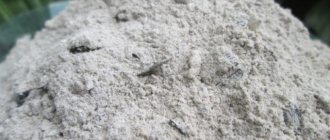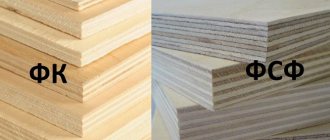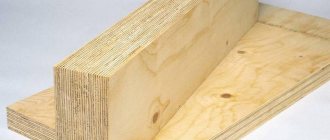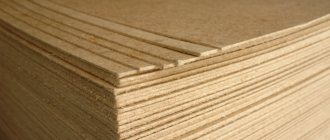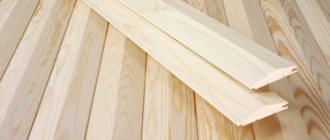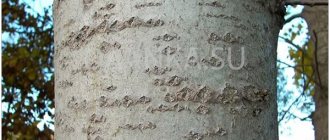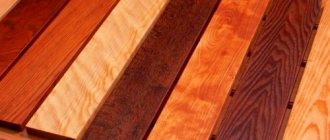Wood ash is a residue of mineral impurities formed during the combustion of wood or plant materials. It is a brown powder with fragments of charred branches. Ash contains a large number of useful compounds, which allows it to be used as a natural fertilizer. At the same time, it is an environmentally friendly substance that can be obtained independently using agricultural waste.
Compound
The composition of wood ash consists of a huge amount of mineral impurities.
Contents of the most important elements
| Element connections | Contents per 100 g |
| Calcium carbonate (CaCO3) | 17% |
| Calcium silicate (CaSiO3) | 16,5% |
| Calcium chloride (CaCl2) | 12% |
| Potassium orthophosphate (K3PO4 | 13% |
| Calcium sulfate (CaSO4) | 14% |
| Sodium orthophosphate (NaPO4) | 15% |
| Magnesium compounds | 4% |
| Sodium chloride (NaCl) | 0,5 % |
The chemical formula varies slightly depending on the type of wood being burned. The ashes of deciduous trees, young branches and fallen leaves are considered richer in mineral content compared to coniferous species. The powder obtained after burning green plants and grass contains less calcium compounds than wood residues. The components of wood ash have many beneficial functions.
Harm from consuming ash in the garden
- Too much added ash acidifies the soil. For most garden crops, neutral or slightly acidic soil is most suitable. After a large amount of this fertilizer, it is quite difficult to restore the environment.
- It is impossible to determine exactly how many of the necessary elements will fall into the soil along with the ash. Therefore, it is best to use combustion products in the garden along with other industrial fertilizers to ensure that the plants are supplied with the necessary microelements.
- Cannot be mixed with ammonia fertilizers. When these two mixtures are combined, there will be a loss of nitrogen, which will simply evaporate. In addition, a shock dose of ammonia is formed, which is deadly for garden crops.
- Promotes the development of diseases in potatoes: scab and rhizoctonia.
- You cannot fertilize fragile young seedlings, as the ash contains a lot of salts that are harmful to small seedlings.
- When using combustion residues as fertilizer, radishes, radishes and turnips enter the stage of seed formation. Popularly, this phenomenon is called “got the arrow.” Therefore, the use of ash on these crops is unacceptable.
Properties of ash
With the help of wood ash in the form of fertilizer, gardeners enrich the soil with necessary components and regulate its Ph. These beneficial properties are enhanced by combining ash with peat, humus, and compost. The plants' need for a set of microelements is almost 100% satisfied due to the chemical composition of the ash. Each element formed in combustion products affects certain life processes occurring in plant tissues.
A high concentration of potassium in the ash allows increasing frost resistance in heat-loving crops. This is especially true when growing chrysanthemums, lilies, and roses.
Calcium derivatives have beneficial properties:
- Accelerate metabolism, thereby enhancing plant growth.
- Affect the absorption of nutrients.
- Activate photosynthesis processes.
- Affects the increase in green mass.
- Increases resistance to frost.
Magnesium compounds are a necessary trace element for the normal development of garden and vegetable crops. They affect cell metabolism. Thanks to this property, plant growth increases. In addition, magnesium is responsible for the sweet taste of vegetables and fruits.
Chlorides protect seedlings from fungal infections. They are able to extend the shelf life of harvested vegetables and fruits. In addition, they help to accumulate water in crops such as cucumbers and zucchini.
Benefits for plants and soil
It is no coincidence that wood ash has been loved by gardeners and gardeners since ancient times. She:
- loosens the soil structure;
- reduces acidity;
- contains macro- and microelements in a plant-friendly form;
- creates a favorable soil environment for the development of microorganisms;
- disinfects the soil, destroying fungal spores;
- improves the quality of compost;
- allows you to effectively combat different types of pests and plant diseases.
Use of wood ash
The most common use of coal is in agriculture. Ash obtained from burning wood residues is recommended for use in the following cases:
- shedding of leaves on grapes;
- cracking of carrot fruits;
- premature rotting of fruits;
- potatoes and tomatoes turn black;
- mold on strawberries;
- signs of fungal diseases on the leaves.
In addition, soot is used as a universal fertilizer, soil pH regulator, and protection against insect pests.
Using ash against diseases and insects
Wood ash in the country is successfully used when:
- powdery or downy mildew;
- rot;
- cabbage midges, Colorado potato beetles;
- ants and slugs.
As soon as the first signs of fungal diseases are detected on the leaves of the seedlings, an ash mixture is used. To prepare it, 2-3 kg of ash is diluted with 10 liters of water. Leave in a warm place for several days. The resulting ash infusion is used to irrigate the shoots for 3-4 days, then take a break for 15-20 days and repeat the procedure. The addition of grated laundry soap enhances the effect.
Dry ash is not liked by various garden pests, especially snails and slugs. The protective properties of ash are enhanced when combined with tobacco dust in equal parts. It is sprayed in places where insects accumulate at the rate of 200-300 grams of product per 1 m2.
Stimulating plant growth with ash solution
The combustion products of wood raw materials are often used as a natural stimulator of seed germination. Soaking in an ash solution activates the internal resources of the grain. The ashes are diluted with boiled water in a ratio of 1:10. The solution is left in a dark place for 2-3 days. The seeds are soaked in the resulting solution, preferably overnight. This method of increasing germination is used when germinating cucumbers, cabbage, eggplants, and tomatoes.
Types of fertilizing
Ash as a fertilizer: it is applied in the form of dry raw materials or liquid mixtures
Natural fertilizer is well absorbed in any form , it all depends on the specific situation, capabilities and preferences of the gardener.
Ash ash is introduced into the soil during plowing, during planting, and is also used as top dressing during the growing season.
Dry ash mixture
Dry ash acts as a top dressing and at the same time repels some pests and serves as a preventative against diseases.
It is applied during the growth period of cultivated plants several times per season. This is the simplest way to use:
- the ash is poured under the root;
- lightly embedded in the soil;
- water abundantly.
Ash ash is sprinkled on the beds, applied into holes, between rows, under bushes and trees in a small layer, or dusted on plants. In this case, natural fertilizer “works” as a preventative agent in the fight against pests and diseases.
Preparation of ash decoctions and infusions
Preparation of ash solution
Knowing how to use ash as fertilizer in the garden and garden, you can significantly increase the yield of vegetable, flower, and fruit crops.
To prepare solutions in the required proportions, we use the table: “Weight of ash in different containers”
Ash-based mixtures are prepared in advance. You can’t just pour natural fertilizer into water and water crops with it. Vegetable growers infuse ash using different recipes.
Ash to increase the yield of peppers
Recipe No. 1.
- Prepare a 200 liter barrel. Pour a 10-liter bucket of ash into it. If this dosage is large, then another option: 1 liter of ash is diluted in 20 liters of liquid
- The barrel is placed for 2-3 days (according to other sources: up to 7 days) in a sunny, warm place. The composition must be stirred regularly
- After 3 days, the infusion is diluted 1:1. Plants are watered or evenly sprayed with it in dry weather.
Recipe No. 2.
- Pour 3 liters of ash into a 10-liter bucket and dilute with a small amount of water
- The mixture is brought to 10 l and stirred
- Leave for 2-3 days
- Dilute with water 1:1 and use as directed
It is convenient to prepare the infusion in a barrel, which is located on the site. The prepared “mineral elixir” is convenient for feeding the bulk of garden crops
For foliar feeding, sifted ash is initially used. The solution is filtered, removing the cloudy residue. The missing volume is added to 10 liters. This is a masterbatch that should be diluted.
A 1 liter jar is diluted with 10 liters of water and this “nutrient elixir” is sprayed over the leaf. The elements are quickly absorbed, which has a beneficial effect on the development of the plant as a whole.
For root feeding from the resulting mother infusion, 1 liter jar is diluted in a 10 liter bucket of water. Water the soil under garden and vegetable crops, being careful not to get the mixture on the stems and leaves. During infusion, water-soluble elements from the ash flour pass into the solution, turning it into a nutrient mixture.
Nutrients are well preserved in the decoction:
- Pour 3 kg of ash into a metal container (basin, bucket) and pour 10 liters of boiling water.
- Boil for half an hour
- Cool, filter, bring to 10 l
- Take a liter jar from the mother broth and dilute it in 10 liters of water.
- Rub 30-40 g of laundry soap into shavings and add to the solution. Thanks to soap, the decoction is better retained on the surface of the leaf blade
Not only vegetable but also flower crops are responsive to foliar feeding with ash infusions
Ash is a chemically active substance, so it must be used separately from other fertilizers. It is not advisable to combine it with ammonium nitrate, urea or manure, which contain a lot of nitrogen. They neutralize each other's action.
Use of ash as fertilizer
Advantages of ash as a fertilizer compared to other complexes:
- easy to make yourself;
- cheapness;
- safe for health;
- balanced composition;
- Most plants can be fertilized;
- there is no expiration date.
- there is no need to strictly adhere to a certain concentration of the solution.
Wood soot is an excellent fertilizer for various garden crops. In addition, it can be used to improve the chemical composition of the earth.
You can loosen the soil and adjust its acidity by digging it together with the ash. Use a mineral product as a Ph regulator after conducting an appropriate test. The study is carried out using litmus paper or folk remedies: soda or acetic acid.
An aqueous solution of ash is sprayed with a spray bottle, thereby protecting the plantings from insect pests. For a long-term effect, add 50 grams of grated laundry soap.
Dry powder is used to dust the potatoes before planting. Ash scattered on the beds will reliably protect the crop from snails, slugs, and prevent infection with fungal infections.
Added to humus or compost, wood soot accelerates the ripening process of the fertilizer, further enriching it with the necessary microelements.
Pest and disease control
Wood ash has been used for centuries as a fungicide and insecticide. To combat plant diseases and pests, it can be used in three ways:
- apply to the soil;
- powder cuttings of plants,
- pollinate the surface of the soil and plants.
It is convenient to pollinate plants with ash through a metal kitchen sieve with large cells. Eyes, hands and respiratory organs must be protected, since in this case the work is carried out with an alkaline substance that can corrode the skin and mucous membranes. In order for the fly ash to stick well, the leaves must be moist, so the plants are pollinated either early in the morning, before the dew has disappeared, or they are watered beforehand.
Pest free
- When planting potatoes, add a handful of ash to each hole - this helps get rid of wireworms. You can add 2 tbsp to the bucket of ash. ground pepper.
- Slugs and snails cannot crawl through ash because their bodies are irritated by the alkali. This is used to protect cabbage, especially cauliflower, which slugs especially like to get into. The powder is scattered over the surface of the bed.
- Ash is used to pollinate cabbage to repel flea beetles and onions to repel onion flies. In this case, 50-100 grams are consumed. ash per 10 sq. m. Pollinate once a week, from the end of May to the beginning of June. Dust is easily washed off with water, so dusting is repeated after rain.
- An ash-soap solution helps against the apple blossom beetle, cabbage caterpillars and aphids: 100-200 g. ash is poured into 5 liters. hot water and boil for several minutes, then filter, add 1 tbsp. any liquid soap or dishwashing detergent. Pour into a sprayer and treat currants, cucumbers, apple trees and cabbage.
No illnesses
- To protect cabbage and pepper seedlings from blackleg, after sowing the seeds in boxes, you need to “powder” the ground with a thin layer of ash.
- Spraying with an ash-soap solution is used to combat powdery mildew.
- Dusting with dry ash protects strawberries from gray rot. It is especially important that this technique can be used during fruiting.
Along with humus, wood ash is one of the oldest fertilizers in the world - the use of this natural substance as a fertilizer, soil deoxidizer, fungicide and insecticide always gives excellent results in the form of increased yield. It is not for nothing that the word “ash” in Slavic languages is considered related to the word “gold”.
How to apply fertilizer
It is necessary to add ash to the soil when digging it in early spring after the snow melts. This measure prevents the leaching of calcium along with melt water. Heavy soils are an exception to this rule. Fertilizer is applied to them in the fall. About 150-200 grams of charcoal are used per 1 m2.
As a dry fertilizer, ash is added along the edge of the hole, mixed with soil. Do not sprinkle ashes directly into the hole. Contact with young roots can cause chemical burns. You can lightly dust the stems of the sprouts with ash. The amount of ash is approximately 0.5 cups for just planted seedlings. For older crops, the volume is increased to 2 cups.
Liquid fertilizer can be used immediately without additional infusion. It's quite easy to prepare. To do this, dilute 200-300 grams of ash in 10 liters of water. The product used can be used every 15-20 days throughout the entire gardening season, best in dry, windless weather.
Useful tips
If you have a stove or fireplace at your dacha for burning wood, do not throw away the ash under any circumstances. It is suitable for feeding almost any plants in the garden, both during planting and during the formation of ovaries. In fact, ash is an organic analogue of superphosphate, which is why it is so widely used.
However, it should be remembered that only ash of organic origin should be used: ash obtained from the disposal of household waste will not only not bring the desired result, but can also harm crops.
The features of using ash as a fertilizer are discussed in detail in the video.
Contraindications for using ash
Ash is a universal remedy, but it is not always possible to use it, and in some cases it is even harmful. Charcoal reduces the acidity of the soil, as a result, it should not be used in low or normal soil pH. Plants that prefer acidic soil should not be fertilized with soot. These include:
- conifers;
- camellias;
- rhododendrons;
- heather;
- sorrel;
- radish;
- watermelon;
- orchids and violets.
An overdose of fertilizers has a bad effect on the growth and development of seedlings. Excess minerals can be determined by the appearance of the garden crop. So, too much calcium is indicated by:
- early drying of tomato shoots;
- rapid growth of leaves on apple trees and grapevines;
- chlorosis on pink leaves;
- shedding of flower leaves.
A large amount of potassium leads to:
- the appearance of dark pulp on apples and pears;
- bitter taste of fruits;
- shedding of leaves.
Charcoal is incompatible with nitrogen fertilizers. Under its influence, the effect of nitrogen is neutralized, and the seedlings cease to receive the necessary nutrients. If necessary, fertilizing can be carried out at different periods: one fertilizer in the fall, and another in the spring.
Phosphorus compounds should also not be combined with ash. This makes it difficult for plantings to absorb micronutrients and impairs their development.
Indications and contraindications for use
The use of ash is indicated on acidic or podzolic soils to restore the balance of acidic and alkaline microelements. There are plants that prefer acidic soils, but most berry and vegetable crops grow well in slightly acidic soils.
A slightly acidic reaction is necessary to dissolve some nutrients. For example, phosphorus in an alkaline environment turns into inaccessible compounds and does not benefit plants.
Ash fertilizer does not contain chlorine, so it is recommended for those plants whose growth is inhibited by chlorine compounds. It takes time to eliminate it from the soil, so chloride compounds are used mainly in the fall.
If a nutrient deficiency occurs in spring or summer, then the best way to feed the crops will be an infusion of ash to feed the plants. You can make it a week in advance by filling it with water and waiting until most of the microelements turn into liquid.
If you regularly use urea, the plants will grow green mass well. At the same time, they will not be able to bloom and set fruit, since all the energy will go into the growth of leaves and shoots. In order to have a balance of nutrients, you need potassium and phosphorus, then the harvest is guaranteed to be high.
A contraindication for fertilizing with ash is high soil pH. If liming of the soil was carried out, then wood ash is not used for 1 - 2 years. And:
- You cannot add ash and phosphates at the same time;
- use ash obtained from garbage - plastic, rubber, painted wood - in the garden;
- You cannot apply nitrogen fertilizers and ash at the same time, since these substances neutralize each other’s effects, that is, the acid is neutralized by the alkali;
- There will be no benefit from ashes that have been stored for a long time in the open air; rain washes nutrients into the soil.
There are rules and recommendations for the preparation and storage of the substance.
Benefits against plant pests
When the soil becomes acidified, plants lose their immunity because they cannot feed properly and distribute substances in the tissues. Fungal diseases are the main scourge of gardeners.
The spores spread quickly and can destroy an entire crop in a week. To prevent this from happening, it is better to regularly water the soil with ash infusion and also spray the leaves.
The alkali prevents insects such as ants, snails or slugs from approaching the plantings. The invasion can be stopped by sprinkling dry ash around the crops. Slugs get burned and die crawling through the ashes.
If you provide proper nutrition to plants, they themselves strengthen their own immunity and can fight pests with the help of synthesized chemical compounds.
Common mistakes
- Not everyone clearly understands that wood ash is added in small portions.
- It is bad when ash is used together with nitrogen, potassium, and phosphorus fertilizers.
- This fertilizer is not added to indoor plants. Otherwise, you can ruin the soil.
- It is better not to use ash from paper products: magazines, newspapers, books to feed plants. The ink contains dangerous heavy compounds.
- The most dangerous consequence is overfeeding. Therefore, 4-5 fertilizing with this substance per year is enough.
- It is better to store ashes and soot in a closed container. In the open air, one of the main microelements, potassium, is rapidly washed out of them.
